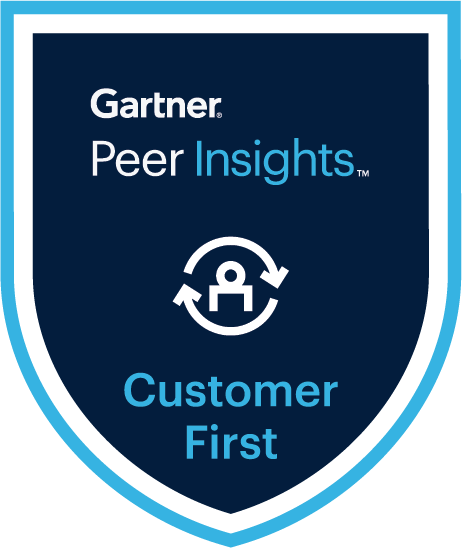
Framework and importance of Supply Chain Management
Supply chain management (SCM) is an important factor in managing the product of a business and recognizing the needs of the customer. In the supply chain, crucial information for a business is contained in order to decide how a commodity is sold in order to change prices and value for the consumers. Companies who manage their supply chains will increase their profitability and satisfy their customers' requirements better.
What is supply chain management?
Supply chain management(SCM) is managing the complete production flow of goods or services to improve quality, delivery, customer experience and cost-efficiency. In other words, SCM begins with designing the raw materials to distributing the final product to the customers.
How does supply chain management work?
The supply chain management process includes a wide variety of functions, from receiving an order till delivery of products and after-sales services. Some of SCM's core activities are as follows:
- Constant provision of intermediary or raw goods and services will maintain business continuity.
- Tracking and monitoring of goods status, business activities, etc.
- Identify strategic locations to achieve beneficial outcomes.
- Streamlining of redundancy reduction processes and operational cost reduction.
- Conducting a business with a market situation and overall condition relevant and competitive.
- Mounting, testing, packing and delivery of any production activities.
- The logistics are organized to deliver and distribute the products in a timely manner.
- After-sales support management and returns for processing.
- The timely delivery of high quality products will enhance customer satisfaction.
- Plan production and distribution through consumer demand forecasting.
- Efficient inventory managementincreases the level of unprecedented demand.
Why supply chain management is importance?
Supply chain management works by knowing the needs of the consumer to adjust plans on the basis of that knowledge. Supply management ties production to shipping and delivery of goods from the beginning as a raw material before the finished product is shipped to the customer. Supply chain management monitors both corporate and distributor inventory to coordinate with past and potential sales and to identify supply needs
- The operating costs of supply chain management firms are minimized.
- Customer expectations can be more fully understood by supply chain management firms, which enhances customer loyalty by supplying the right product without error at the right location.
- This simplifies data processing and thus improves the company's profits.
- SCM improves the transparency of financial, content, flow of data and management of results.
What are the different techniques in supply chain management?
Specific steps for supply chain management to reach production and sales goals
1. Add the plan to meet the needs or demands of consumers. In order to enhance potential growth and the use of assets, factors such as sales and inventory must be evaluated. Managers can set targets for sales or inventory reduction to save resources and money.
2. Determine customer logistics and draw up distribution maximum plans. Logistics involves the use of key household sites until smaller localized networks are distributed. Supply chain managers are gathering up data to analyse and affect the distribution trends or changes in the season.
3. Develop primary outsourcing methods strategies are built by an overall evaluation of the method to incorporate cost-effective strategies such as outsourcing. When these systems are maintained within the organization or using local enterprises, marketing and distribution can be better controlled. Managers assign duties to meet requirements and reduce costs.
4. Evaluate and consider the needs of the customer to help the decision-making process. Information collection helps to recognize deficiency areas and promotes practise to bring value both to the organization and to consumers. Data offers useful insight into the use and demand of consumer goods so managers can create economical methods without compromising efficiency or satisfaction of customers.
Effective strategies in supply chain management?
The Strategic Analysis of your network of the supply chain will lead to a set of plans for the business in the future, from primary to about five years.
The corporate strategy as well as tactical and organizational execution of optimization strategies are protected by these plans. Naturally, emergency measures such as supplies and labour shortages should be in place for responding to emergencies. These plans help the business transition from a more reactive approach to a constructive supply chain.
Strategic Planning: The whole path to the company's priorities is established by this technique. The management, development, transport and distribution of inventory objectives are established and matched to technology and customer service. Management will analyse organizational processes and investment areas at this level. The strategy should include the projection of clients' demand for services through the supply chain. The strategy should include
This technique needs to be split into all functions. For example, if the plan requires more often the purchase of smaller amounts of raw materials, the procurement department does not invest in one year of supply to increase the price.
The speed of change is outweighing the capacity of many businesses to sustain themselves. Adopting modern or evolved business models demands a high degree of agility and a willingness to adapt. There may be far-reaching consequences for society for major changes in the structure and capacities of an organization.
Tactical planning : the tactical plan should span a duration of one to two years, with personnel, including staff, to support the longer-term strategy. The Tactical Plan should include time frames for each phase, specific skills and any specifications for resources, such as new storage areas. The strategy should also include external resource provisions such as consultants and facilities.
Operational Planning : This section incorporates the approach into the everyday work of strategies, plans and programme. In order to increase organizational effectiveness, the Strategy allocates resources and performance indicators. Operational planning, depending on your company, includes regular, weekly or monthly tasks to schedule and track your business daily.
Contingency planning : The contingency plan includes the business' worst scenarios, such as adverse weather, work difficulties, lack of major suppliers and suppliers. Any incident that may send startling waves to the entire company should be included in contingency plans.
The purpose is to focus on your response before an incident takes place and to help shorten the time to respond. Another target is the internal and consumer disturbance minimization. There will be activities
PiLog’s value added extended supply chain management
The aim of supply chain optimization is to maintain the right products in right place at the right time as cost-effectively as possible. PiLog’s strategy framework is master in ensuring the stock availability, while reducing the cost and mitigating the risk of excess inventory. This is accomplished by estimating demand and regulating supply variables thereby actively adapting inventory specifications and stock rules.
FAQ’s
Supply chain management (SCM) means handling activities involving the procurement, processing and delivery of raw materials to the end user. Good supply chain management ensures the equilibrium between demand and supply is maintained.
Functions : The supply chain management approach involves the management of the movement of raw products to an enterprise, certain aspects of the internal production and movement of finished goods out of the organization, and towards customers.
The 5 different steps or components of supply chain management :Preparation, source, distribution and return.
The most important benefits of effective supply chain management.
- Better cooperation
- Improved quality management
- Better efficiency rate
- Keep up with the market
- Transportation optimization
- Reduced overhead costs
- Improved risk control
- Increased working capital
Tactical activities :
- Contracts and other procurement decisions for sourcing.
- Decisions on development, including concept of contracting, places, scheduling and planning.
- Concluding inventory consistency, quantity and location decisions.
- Strategies of transport, including duration, routes and contracting.
The supply chain network consists of four phases:
- Stage 1: The key step is designed around a lead-time based internal MRP system.
- Stage 2: Control of the supply chain
- Stage 3: Incorporation of the supply chain
- Stage 4: coordination on demand-supply network





